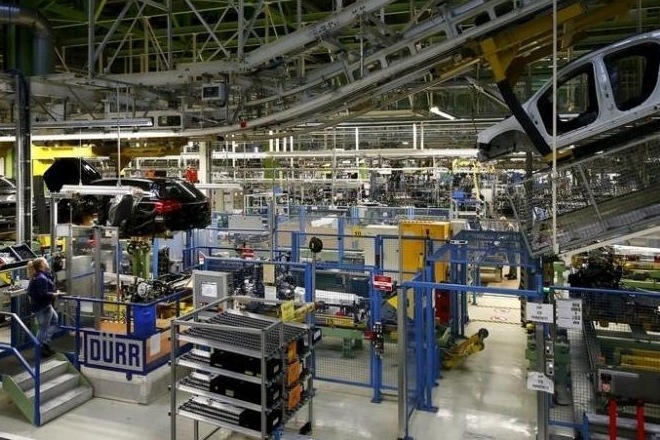German industrial production unexpectedly fell in December, led by a contraction in manufacturing and construction. Output, adjusted for seasonal swings and inflation, declined 3 percent from November, when it advanced a revised 0.5 percent, the Economy Ministry in Berlin said in a statement on Tuesday. The volatile indicator’s worst reading since early 2009 compares with a median estimate for a 0.3 percent increase in a Bloomberg survey. Production was down 0.7 percent from a year earlier.
“The government remains cautiously optimistic in terms of further industry developments,” the Economy Ministry said by e-mail. “The generally positive economic assessment in the yearly projection won’t be changed by this.”
German business confidence slipped in January and momentum in manufacturing and services slowed as national elections in September and risks related to Brexit and protectionist trade policies in the U.S. weigh on the outlook. Companies’ assessment of current economic conditions remains favorable, with factory orders surging and unemployment dropping to a record low.
You May Also Want To Watch:
[jwplayer fGYAvVl6-DE6UeepY]
“The numbers have nothing to do with weakness in the fundamentals — it has to do with workdays and the fact that a lot of companies probably shut down between the holidays,” said Andreas Rees, chief German economist at UniCredit in Frankfurt. He sees weaker production potentially leading to a slight downward revision to the German statistical agency’s fourth quarter GDP estimate, which could come in between 0.4 and 0.5 percent.
Output was damped by a 3.4 percent decline in manufacturing, according to the data. Construction fell 1.7 percent in December from the previous month, while energy production declined 0.9 percent.
A rise in order intake in the industrial and construction sectors as well as an increase in sentiment indicators in these areas “signal a revival of production growth in coming months,” the Economy Ministry said.
Today’s data come on the back of a Monday report showing factory orders bounced the most since 2014 in December. The surge was driven by demand for investment goods and saw both domestic and export orders increasing.


